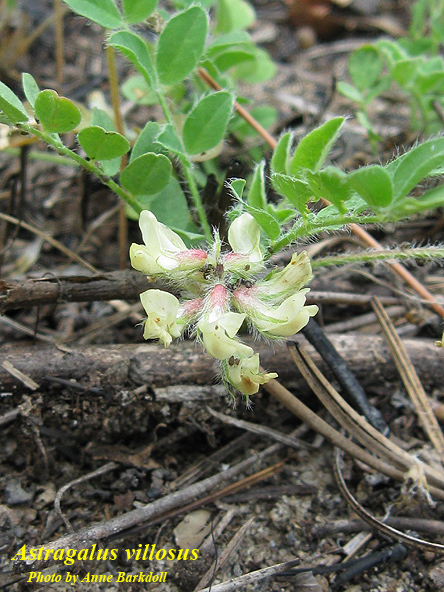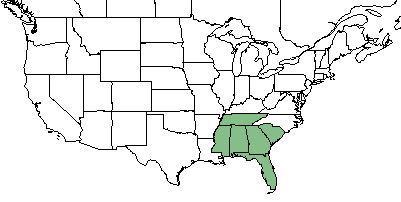Difference between revisions of "Astragalus villosus"
(→Description) |
(→Description) |
||
| Line 25: | Line 25: | ||
==Description== | ==Description== | ||
<!-- Basic life history facts such as annual/perrenial, monoecious/dioecious, root morphology, seed type, etc. --> | <!-- Basic life history facts such as annual/perrenial, monoecious/dioecious, root morphology, seed type, etc. --> | ||
| − | ''A. villosus'' is an annual forb/herb of the ''Fabaceae'' family native to North America. <ref name= "USDA Plant Database"> USDA Plant Database [https://plants.usda.gov/core/profile?symbol=ASVI6 https://plants.usda.gov/core/profile?symbol=ASVI6] </ref> It has a growth form that is low-growing and spreading.<ref name= "Lady bird">[[ | + | ''A. villosus'' is an annual forb/herb of the ''Fabaceae'' family native to North America. <ref name= "USDA Plant Database"> USDA Plant Database [https://plants.usda.gov/core/profile?symbol=ASVI6 https://plants.usda.gov/core/profile?symbol=ASVI6] </ref> It has a growth form that is low-growing and spreading.<ref name= "Lady bird">[[https://www.wildflower.org/plants/search.php?search_field=&newsearch=true]] Lady Bird Johnson Wildflower Center. Accessed: March 25, 2019</ref> |
==Distribution== | ==Distribution== | ||
Revision as of 09:11, 2 April 2019
Common name: Bearded Milkvetch; Southern Milkvetch
| Astragalus villosus | |
|---|---|

| |
| Photo by the Atlas of Florida Plants Database | |
| Scientific classification | |
| Kingdom: | Plantae |
| Division: | Magnoliophyta - Flowering plants |
| Class: | Magnoliopsida - Dicots |
| Order: | Fabales |
| Family: | Fabaceae |
| Genus: | Astragalus |
| Species: | A. villosus |
| Binomial name | |
| Astragalus villosus Michx. | |

| |
| Natural range of Astragalus villosus from USDA NRCS Plants Database. | |
Contents
Taxonomic Notes
Synonyms: Phaca intonsa (Sheldon) Rydberg ex Small
Varieties: none
Description
A. villosus is an annual forb/herb of the Fabaceae family native to North America. [1] It has a growth form that is low-growing and spreading.[2]
Distribution
A. villosus is found in the southeastern corner of the United States, specifically in Tennessee, Mississippi, Alabama, Georgia, South Carolina, and Florida. [1]
Ecology
Habitat
A. villosus proliferates in sandhills and other loose, dry, sandy places. [3] It can also be found in clay soils, loose sand, loamy sand, pinewoods, old field, and burned pineland.[4]
Phenology
A. villosus has been observed flowering between February and April. [5]
Conservation and Management
Cultivation and restoration
Photo Gallery
References and notes
- ↑ 1.0 1.1 USDA Plant Database https://plants.usda.gov/core/profile?symbol=ASVI6
- ↑ [[1]] Lady Bird Johnson Wildflower Center. Accessed: March 25, 2019
- ↑ Weakley, A. S. (2015). Flora of the Southern and Mid-Atlantic States. Chapel Hill, NC, University of North Carolina Herbarium.
- ↑ URL: http://herbarium.bio.fsu.edu. Last accessed: June 2018. Collectors: Loran C. Anderson, R.K. Godfrey, J.B. Nelson, Brenda Herring, Don Herring, R.Kral, M. Knott, LB Trott, Richard D. Houk, Delzie Demaree, D. Burch, George Cooley, Joseph Monachino, Rodie White, James W. Hardin, Wilbur H. Duncan, Ron Miller, Jim Lytton, Rod Wilson. States and counties: Florida (Leon, Wakulla, Franklin, Taylor, Santa Rosa, Escambia, Walton, Liberty, Madison, Lafayette, Lake, Columbie, Hernando, Gilchrist, Citrus, Clay) Georgia (Grady, Thomas) Alabama (Escambia)
- ↑ Nelson, G. PanFlora: Plant data for the eastern United States with emphasis on the Southeastern Coastal Plains, Florida, and the Florida Panhandle. www.gilnelson.com/PanFlora/ Accessed: 17 MAY 2018